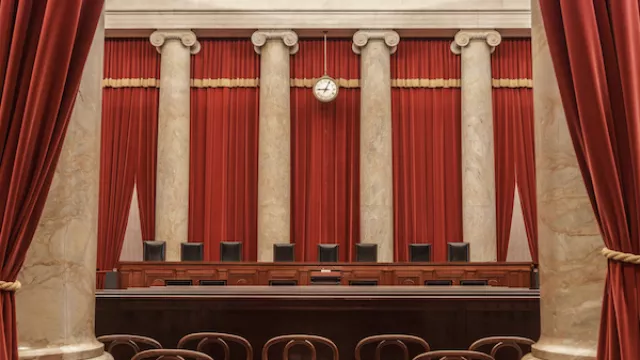Table of Contents
Government transparency is critical when it comes to fighting censorship

In its Murthy v. Missouri ruling last week, the Supreme Court stopped short of deciding whether pressure on social media platforms by federal officials to censor speakers violates the First Amendment. So now Congress must take action to protect free speech online from government interference.
And we’ve got a ready-made response: FIRE’s model legislation, the Social Media Administrative Reporting Transparency Act, or “SMART” Act, would require the government to disclose its communications with social media companies about moderating content.

FIRE statement on Murthy v. Missouri
The Supreme Court sidestepped deciding whether government pressure on social media platforms violates the First Amendment.
As FIRE Chief Counsel Bob Corn-Revere said on the day of the Murthy decision, “A little bit of sunlight would go a long way toward ending the censorship by coercion at issue” in the case. With the right transparency requirements in place, the American people would be able to identify occasions in which federal officials contact social media and gain more insight into whether it led to censorship of their speech. That’s why FIRE released a report featuring our model legislation that would provide much-needed sunshine when it comes to government jawboning.
The SMART Act would require the government to disclose any communication in which a federal agency employee contacts a social media company regarding content published on its platform (with limited exceptions aligned with certain Freedom of Information Act exceptions). It casts a wide net in order to capture the full universe of communications that may involve coercive or intermeddling government demands or requests through direct methods like text and email, but also through the use of third parties to convey the message to a platform.
In Murthy, five social media users and two states sued the government, alleging that federal officials had in recent years pressured, strong-armed, and intimidated social media platforms into censoring disfavored speech and speakers. While the federal district court preliminarily enjoined the federal official’s practices, and the Fifth Circuit affirmed (but narrowed the injunction), the Supreme Court did not address whether the officials’ actions violated the First Amendment. Instead, it held the plaintiffs did not have standing, meaning they had not established their right to ask a court to prohibit future censorship.
With the right transparency requirements in place, the American people would be able to identify occasions in which federal officials contact social media and gain more insight into whether it led to censorship of their speech.
The Court held that in order to establish standing, “plaintiffs must demonstrate a substantial risk that, in the near future, they will suffer an injury that is traceable to a Government defendant and redressable by the injunction they seek.” In other words, in order to protect themselves in the future from this form of indirect censorship — known as “jawboning” — the plaintiffs would have to show the meetings, the emails, or the words involving government officials not only happened, but likely resulted in the social media company taking actions against the speech or the particular user that they would not otherwise have taken.
This ruling raises significant concerns insofar as the Court set a high bar for individuals who believe they were silenced by government jawboning of social media platforms to get a foot in the courthouse door. For example, Jill Hines, a health activist and a plaintiff in Murthy, questioned health guidance regarding COVID-19 in posts on Facebook and was subject to Facebook’s content moderation policies at the same time that the company was facing government pressure to combat COVID-19 misinformation. While Hines made “the best showing of a connection between her social-media restrictions and communications between” the social media company and the government, the Court said the connection was “tenuous” and that she must show that Facebook's restrictions were “likely traceable” to the government’s pressure. (Emphasis in original.)
That’s a steep hill to climb when the pressure government officials exert is often performed secretly or behind closed doors, and may never see the light of day. Indeed, we only know about the most recent cases of jawboning, which occurred across two presidential administrations, because of internal leaks at social media companies and Elon Musk publicizing government censorship requests.
With a few narrowly defined exceptions, the First Amendment prohibits government officials from censoring the speech of private actors. This core First Amendment principle remains unchanged. While the Supreme Court dodged the question of whether government pressure on social media platforms violated the First Amendment, it reaffirmed last month that the government cannot censor speech by indirect coercion any more than it can by public legislation in NRA v. Vullo.
For free speech and open discourse to flourish online, the American people need to know when government officials exert influence over what or who social media platforms allow on their platforms. FIRE urges Congress to act in favor of government accountability and free and open discourse by taking up our model legislation.
Recent Articles
Get the latest free speech news and analysis from FIRE.

Can the government ban controversial public holiday displays?

The trouble with banning Fizz

FIRE's 2025 impact in court, on campus, and in our culture


